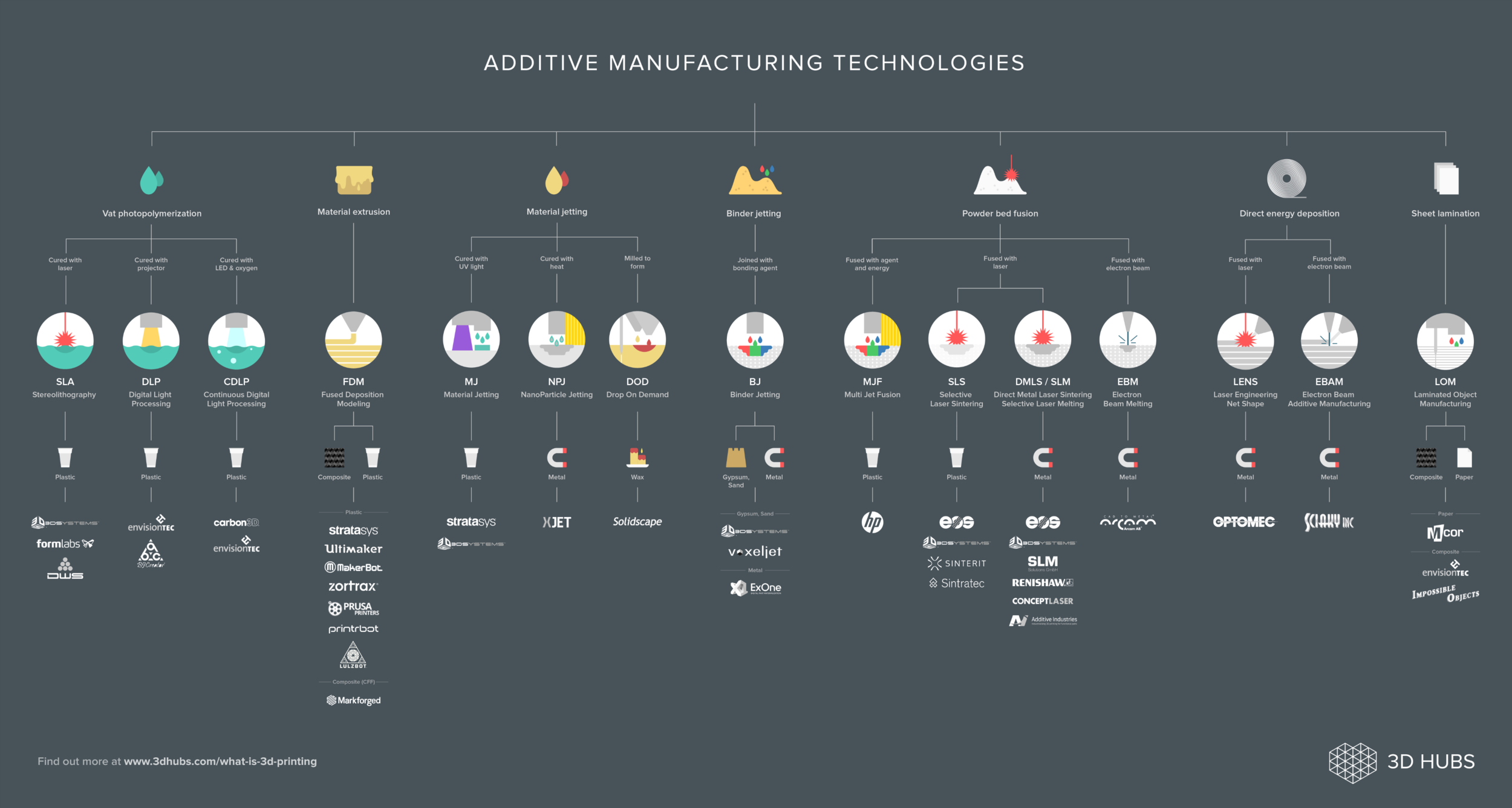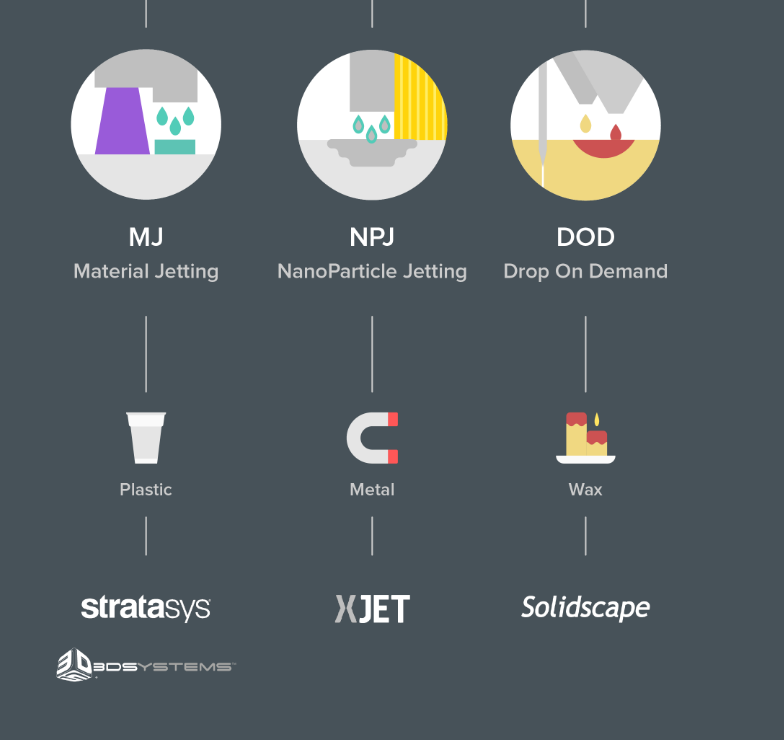
3D Hubs has developed a very clear infographic detailing the numerous 3D printing processes. But I think there’s one problem with it.
The chart attempts to show the different processes used by 3D printers today. It includes seven basic processes and fifteen variations used by dozens of companies. Each variation is shown with the typical types of materials usable by that process. The major companies are listed under the technologies used by their products. It’s a great reference.
Many people believe 3D printing is only one process, material extrusion. Indeed, this is the most popular form of the technology and certainly the most visible: it’s the process used by most desktop 3D printers.

Of course, that’s not the case, and this impression may change as increasing numbers of resin and powder-based units make their way into the desktop market.
But even then, many people mistakenly believe there are only three processes: extrusion, resin and powder. In fact there are many more types as shown on the 3D Hubs chart.
Many of the processes on the chart are entirely new, developed by new 3D printing startups, like Carbon or XJET, while others are pursued by existing companies entering the 3D printer market, like HP.
By looking at these processes, it seems that companies are utilizing every conceivable way to move matter around and bind it together, using heat, light, chemistry or other methods. Is this the end?
Absolutely not! It is almost certain there are multiple other companies – existing 3D print players or secret startup companies – who are actively developing new methods of 3D printing. Their new processes, if proven feasible, could be extremely valuable and thus they are hidden to the public.
I think such searches for improved 3D printing processes are necessary as the existing processes all have a number of constraints that limit their applicability to businesses.
And this leads to my issue with this chart: it’s not going to be wide enough! I believe that within a few years this chart will be substantially wider through the addition of multiple new 3D printing technologies, all of which will be amazing.
For now, however, check out 3D Hubs’ chart and their well written overview of 3D printing.
Via 3D Hubs

